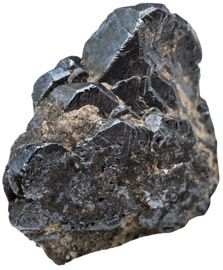Titanium and its alloys can then be divided into four main groups dependent on the microstructure, Pure and commercially Pure Titanium, Alpha alloys, Beta alloys and Alpha Beta alloys, and most are readily weldable.
Titanium is a reactive metal and will burn in pure oxygen at 600°C and Nitrogen above 800°C. Oxygen, Nitrogen and Hydrogen readily diffuse into Titanium and can quickly cause embrittlement. Titanium does not suffer with any cracking issues other than possible cold cracking of the HAZ from embrittlement.
Titanium and Titanium alloys can be arc welded with the gas shielded processes, TIG, MIG or Plasma TIG. The flux shielded processes can be used but are more difficult due to the inherent higher oxygen contents and are not therefore recommended.
 Pure or commercially pure titanium
Pure or commercially pure titanium
Pure or commercially pure titanium, with small intentional additions of Oxygen, Nitrogen, Carbon or Iron that are added for increased strength. These alloys are medium strength and are readily weldable and not heat treatable for added strength.
Alpha alloys
These are largely alpha phase or near alpha alloys containing Aluminium and a small amount of Oxygen, Nitrogen and Carbon for strength. These alloys can be welded in the solution annealed condition.
Alpha beta alloys
These alloys contain Aluminium and beta stabilising elements such as Chromium, Vanadium and Molybdenum. These alloys are heat treated to give a range of high strengths and are readily weldable in the solution annealed condition.
Beta alloys
These alloys range from beta with alpha to near fully beta alloys and are stabilised with Chromium, Vanadium, Niobium, Molybdenum and Tin for increased strength. The alloys containing large amounts of beta phase are more difficult to weld as they require a post weld heat treatment (PWHT) for matching strength and can crack during welding due to the embrittling effect combined with restraint from welding. Fully Beta alloys are readily weldable in the annealed condition but will require cold work and PWHT to maintain the high strength levels.
Filler materials
A large amount of thin wall TIG welding of thin wall, <3mm thick is carried out autogenously, but at larger thicknesses where filler is required then a matching grade is available.
Titanium is commonly identified by a grade number within the ASTM specification and the common alloys have a matching filler material with a similar designation, e.g. ERTi followed by the grade number in line with AWS A5-16 2004, i.e. ASTM Grade 5 alloy has a matching filler ERTi-5. For the higher strength grades a lower strength more ductile filler is sometimes used, where permitted by design, to improve ductility and aid welding. Extra Low Interstitial, ELI filler metals are available which will again improve weld metal ductility.
Cleanliness
Cleanliness is of paramount importance as even low levels of contamination from Oxygen, Hydrogen, Nitrogen or Iron during welding will cause embrittlement and or porosity. Iron contamination will also reduce corrosion resistance. It is therefore essential for cleanliness of all materials and of the workplace at all times. It is best to remove any heavy oxide from the surface of the base material and welding is usually carried out in the pickled condition. The weld preparation should be suitably cleaned and deburred by wire brushing or grinding and a high purity shielding gas shield used. The gas system should be well maintained and free of any leaks. It should be noted that plastic hoses do allow moisture to permeate through, so should be as short as possible. Teflon hoses have the most resistance of the plastics that are available. Compressed air always contains some moisture and oil contamination so air tools should be used with extreme care, electrical tools are preferable. New stainless steel tools, rather than steel, that are only for use on Titanium alloys should be available. Titanium should be welded in a clean area well away from any possible airborne iron contamination from any adjacent fabrication. Filler rods should be scrupulously cleaned and degreased prior to use and then handled with clean gloves as even small areas of moisture or grease from handling can cause local contamination and porosity.
Porosity
Titanium and its alloys have an extremely low threshold for Oxygen, Nitrogen or Hydrogen with small amounts causing porosity. Extreme cleanliness of base material and filler material is required and a good quality gas shield is essential. The completed weld can still absorb oxygen or nitrogen from the atmosphere until it has cooled below 500°C and so a trailing shield gas is usually employed to aid cooling and to protect the weld metal, until it drops below this temperature threshold.
### Cracking
Cracking in the HAZ is associated with the high strength less ductile alpha Beta alloys due to embrittlement from inherent low ductility or from contamination and restraint. It can also be associated with contamination and attention to cleanliness is essential for all alloys.
Parameters
In general the lowest heat input possible for a particular joint configuration is best for all Titanium Alloys.
It is also good practice to keep the torch over the weld pool once welding has finished and the arc has finished, to cool the weld pool and prevent any gas absorption. Once the weld cools below 500C then this can be removed.
Specific parameters for each alloy are available on the relevant Weld Data sheet.
 Titanium is alloyed with Alpha stabilisers such as Oxygen, Carbon, Nitrogen and Aluminium or with Beta phase stabilisers, Chromium, Molybdenum, Niobium, Tin and Vanadium to extend the range of properties available.
Titanium is alloyed with Alpha stabilisers such as Oxygen, Carbon, Nitrogen and Aluminium or with Beta phase stabilisers, Chromium, Molybdenum, Niobium, Tin and Vanadium to extend the range of properties available. Pure or commercially pure titanium
Pure or commercially pure titanium